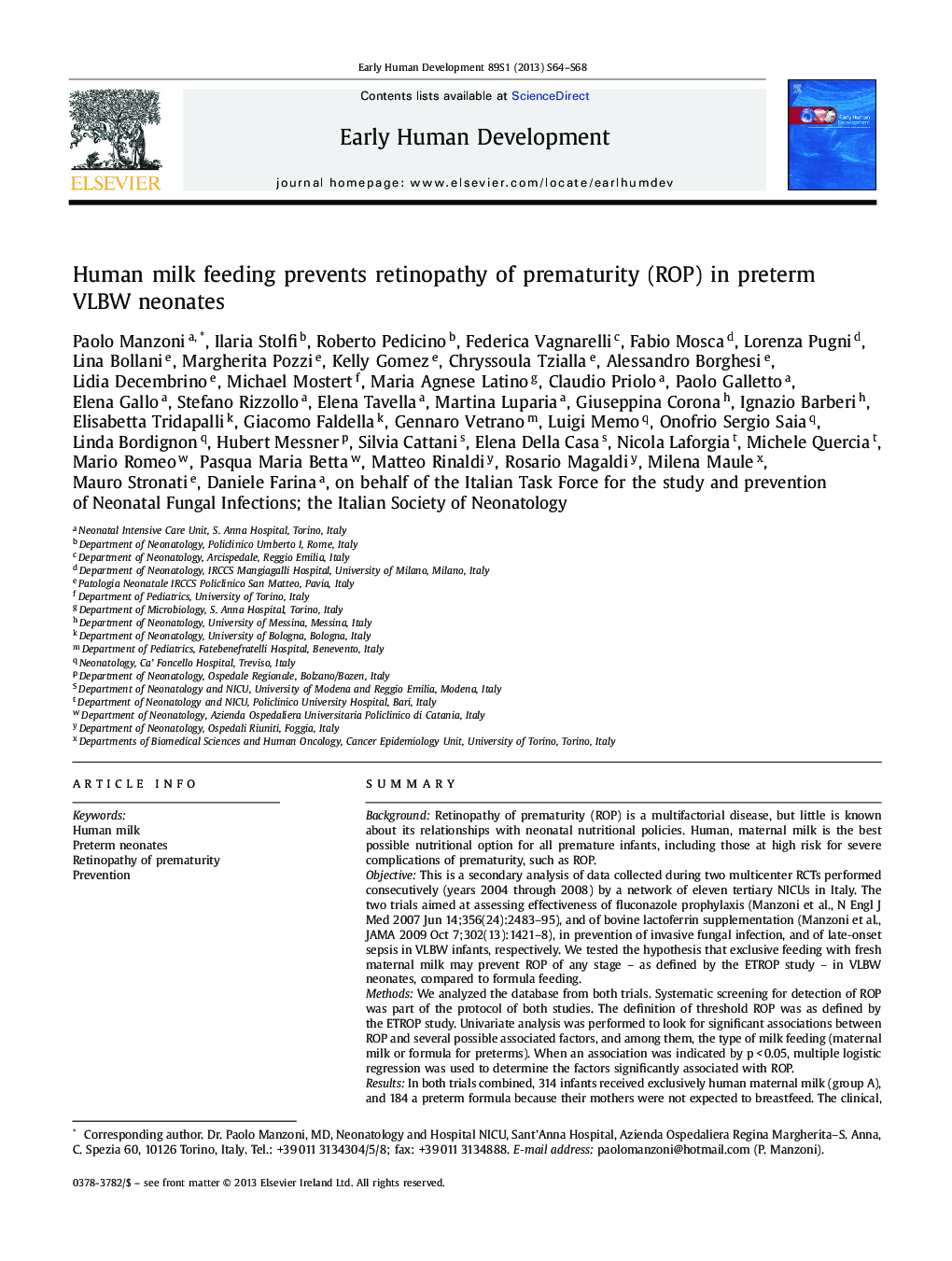| Article ID | Journal | Published Year | Pages | File Type |
|---|---|---|---|---|
| 3916782 | Early Human Development | 2013 | 5 Pages |
SummaryBackgroundRetinopathy of prematurity (ROP) is a multifactorial disease, but little is known about its relationships with neonatal nutritional policies. Human, maternal milk is the best possible nutritional option for all premature infants, including those at high risk for severe complications of prematurity, such as ROP.ObjectiveThis is a secondary analysis of data collected during two multicenter RCTs performed consecutively (years 2004 through 2008) by a network of eleven tertiary NICUs in Italy. The two trials aimed at assessing effectiveness of fluconazole prophylaxis (Manzoni et al., N Engl J Med 2007 Jun 14;356(24):2483–95), and of bovine lactoferrin supplementation (Manzoni et al., JAMA 2009 Oct 7;302(13):1421–8), in prevention of invasive fungal infection, and of late-onset sepsis in VLBW infants, respectively. We tested the hypothesis that exclusive feeding with fresh maternal milk may prevent ROP of any stage – as defined by the ETROP study – in VLBW neonates, compared to formula feeding.MethodsWe analyzed the database from both trials. Systematic screening for detection of ROP was part of the protocol of both studies. The definition of threshold ROP was as defined by the ETROP study. Univariate analysis was performed to look for significant associations between ROP and several possible associated factors, and among them, the type of milk feeding (maternal milk or formula for preterms). When an association was indicated by p < 0.05, multiple logistic regression was used to determine the factors significantly associated with ROP.ResultsIn both trials combined, 314 infants received exclusively human maternal milk (group A), and 184 a preterm formula because their mothers were not expected to breastfeed. The clinical, demographical and management characteristics of the neonates did not differ between the two groups, particularly related to the presence of the known risk factors for ROP. Overall, ROP incidence (any stage) was significantly lower in infants fed maternal milk (11 of 314; 3.5%) as compared to formula-fed neonates (29 of 184; 15.8%) (RR 0.14; 95% CI 0.12–0.62; p = 0.004). The same occurred for threshold ROP (1.3% vs. 12.3%, respectively; RR 0.19; 95% CI 0.05–0.69; p = 0.009).At multivariate logistic regression controlling for potentially confounding factors that were significantly associated to ROP (any stage) at univariate analysis (birth weight, gestational age, days on supplemental oxygen, systemic fungal infection, outborn, hyperglycaemia), type of milk feeding retained significance, human maternal milk being protective with p = 0.01.ConclusionsExclusive human, maternal milk feeding since birth may prevent ROP of any stage in VLBW infants in the NICU.
